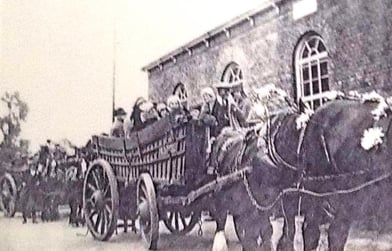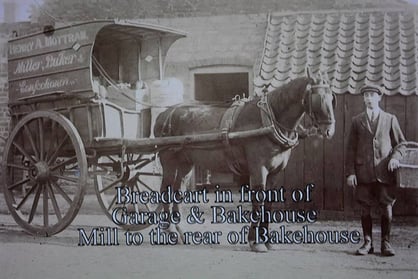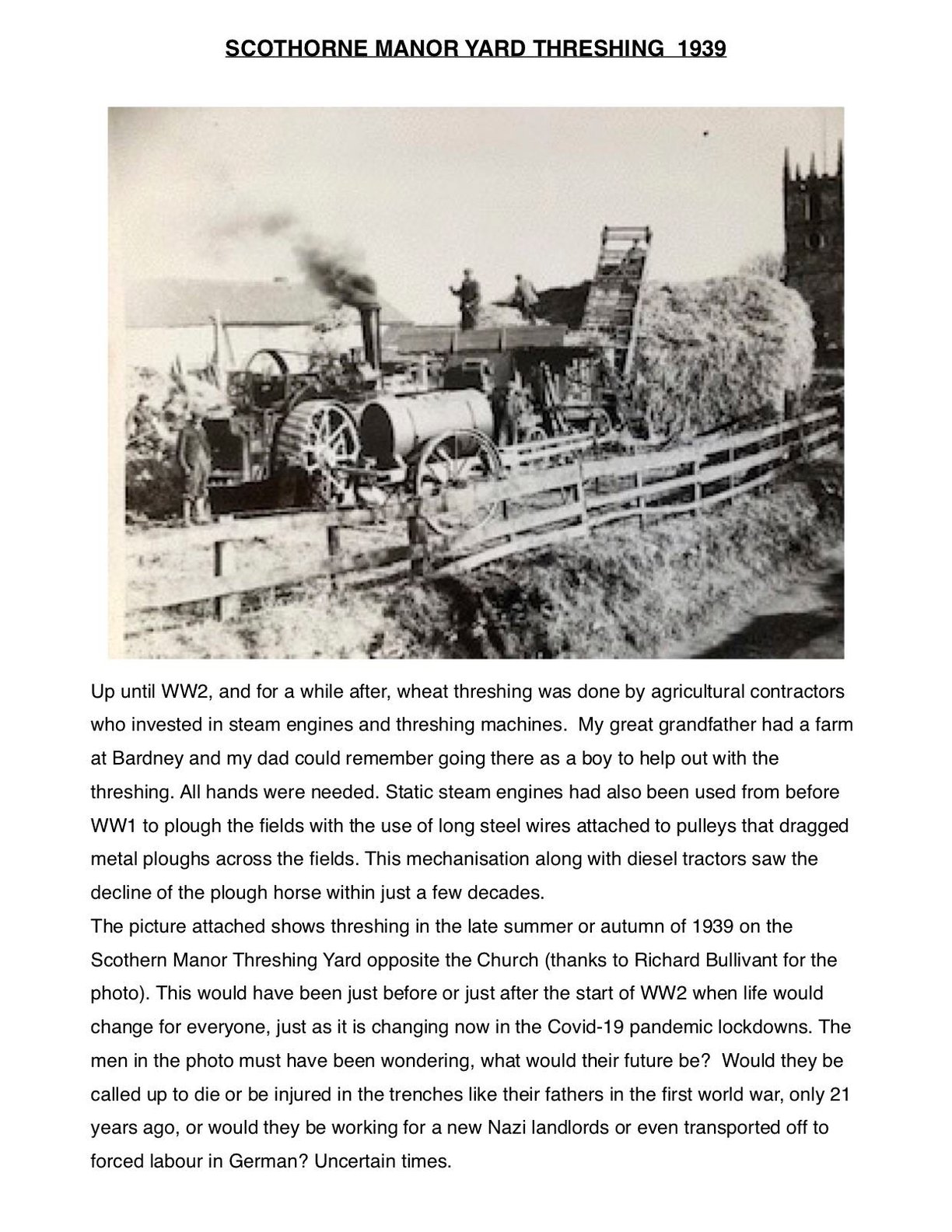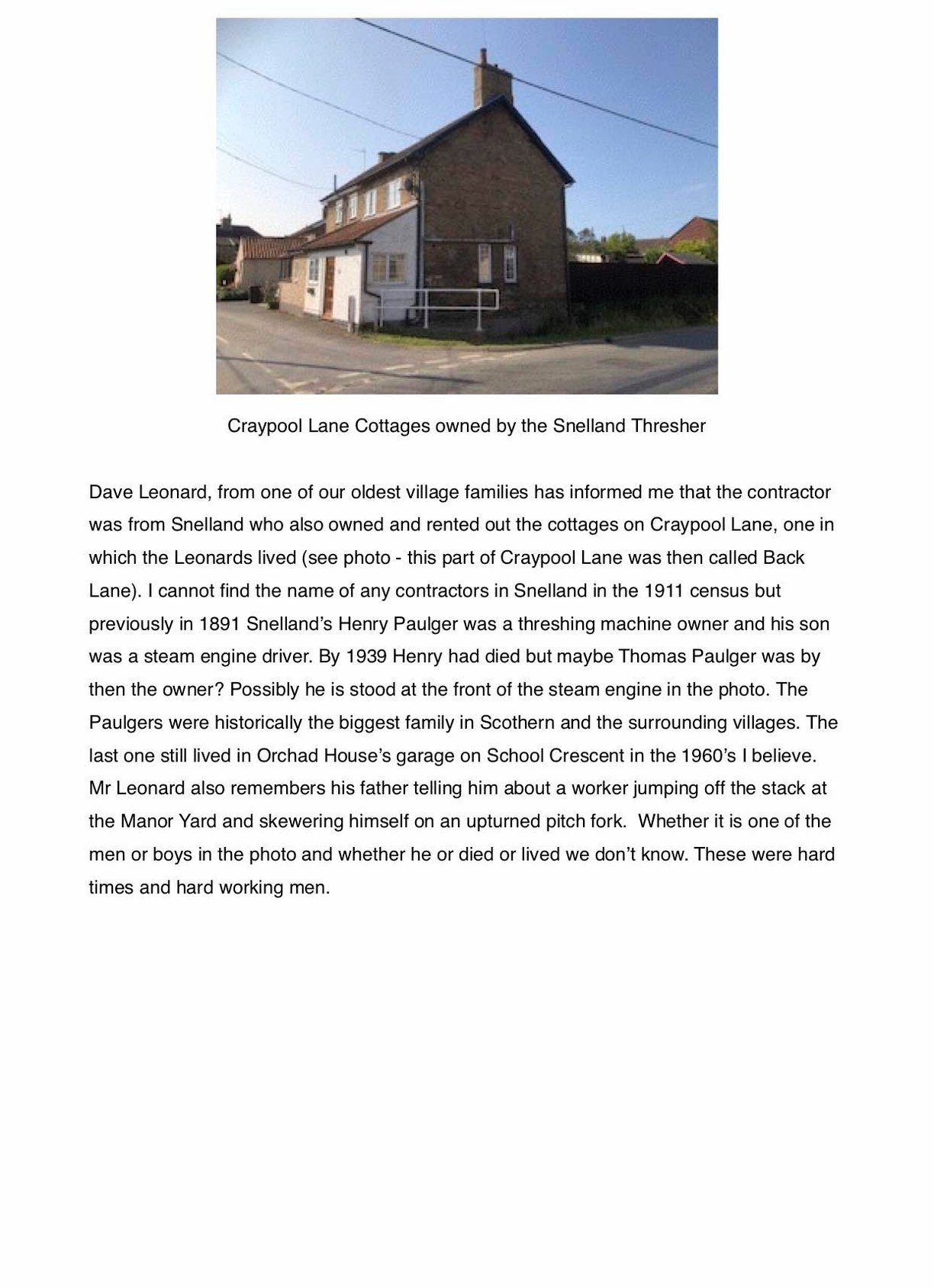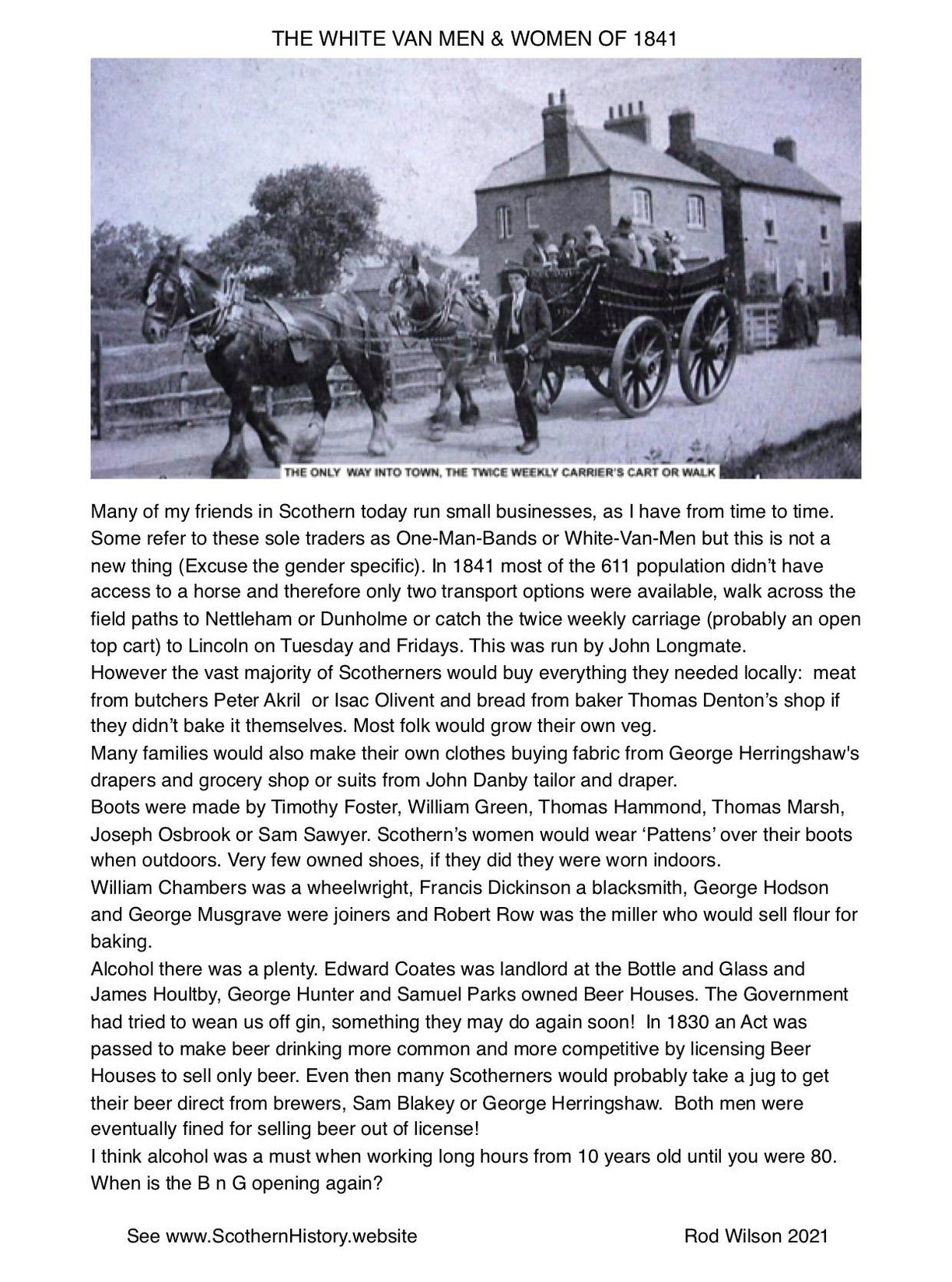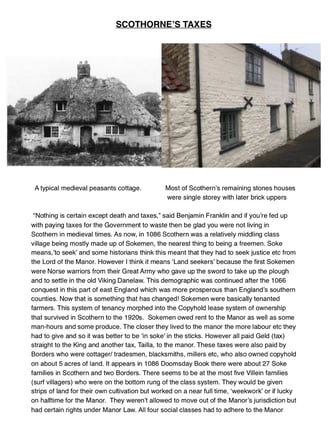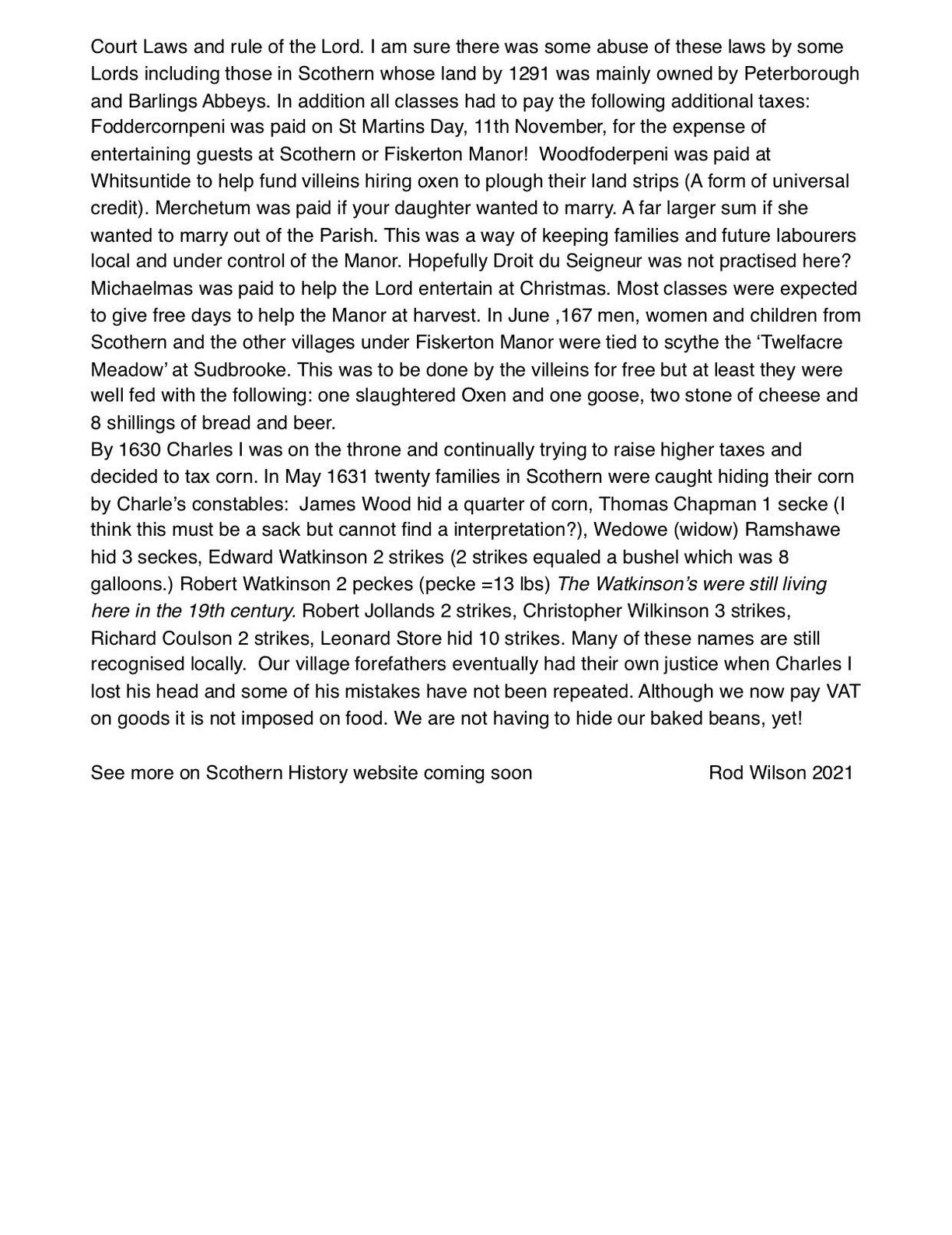WORK
AND
OCCUPATIONS
Scothern has always been predominately an agricultural village. Until the middle of the 20th century the majority of the workforce were agricultural workers, many working for the Manor or the other small farmers. However the Scothern villagers consumer needs and every day items were met by the villages own shops and artisans. These included grocers, (although most people grew their own veg), bakers, butchers, brewers, shoe makers and tailors and drapers. There was a local doctor's surgery at the Deane on Craypool Lane, a hairdressers who would also pull teeth, a local lady such as Mrs Harding in Pinfold Cottages would act as a midwife and help the joiner lay you out when you died and lay you in the coffin he had made for you. There was very little need to catch the weekly Carriers cart into Lincoln, or Les Simm's bus when it started its motorised route in the 1920s. Most people had very little disposable income and very few would have holidays although the opening of Langworth Railway Station in 1841 gave them a way to get to the coast. Before Les Simm's bus the annual Chapel outing (see photo top) would be a major event everyone looked forward to. Of course the people of Scothern in the 18th, 19th and early 20th century were far better off than their medieval Scothern ancestors and yet those living here before and after the Norman conquest were generally better off than most people living in Southern England. How things have changed. After the Vikings took over the north and eastern part of the country and created their own Kingdom within England (the Danelaw) the warriors from the Viking's Great Army took over much of the land from the previous Anglo Saxons owners. These ex-warriors and their descendants were called Soakmen and although they were under the rule of local Norse Thegns and later Norman Lords they retained greater rights and freedoms than most peasants both here and in the rest of the country. At the time of Doomsday Book in 1086 nearly all of Scothern's inhabitants were Soakmen and not Villeins (lowest class of peasants.) For the time, West Lindsey and most of Lincolnshire was one of the most prosperous and most populated area of England. Apart from artisans as mentioned above everyone wasinvolved in agricultural production and I mean everyone. Men, women and children would be involved in bringing in the harvest and all would march up to Sudbrooke to scythe the Great Meadow and help stack the hay to feed the livestock over the winter. Scothern became completely owned by the Church until the dissolution of the monasteries after 1536 and virtually everyone worked their own strips of land and also some of either Peterborough Abbey's land or Barlings Abbey's land as well as paying rent and dues to the Church. The Scothern Enclosure of 1766 eventually allowed the few Scothern folk who could afford it to buy freehold agricultural land, although many lost their hereditary small strips of land, and it wasn't until the 1920's that most could actually buy their cottages instead of owning a sort of leasehold, called Copyhold, from the freehold owners of Scothern Manor or Peterborough Cathedral. This started the modernisation of the village with probably less than ten percent of its inhabitants now working 'On the land' and yet the wheel has turned as it is now quite a middle-class village similar to when the Norse Soakmen lived here all those centuries ago.
SEE MORE OCCUPATIONS BELOW:
